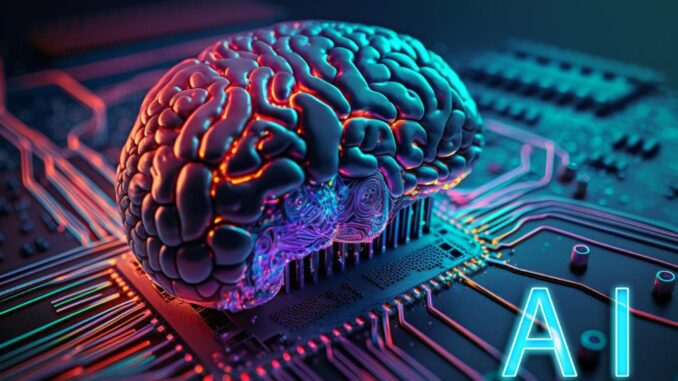
The AI landscape is a rapidly evolving ecosystem that encompasses a wide range of technologies, applications, industries, and methodologies. As of October 2023, here are the key elements that define the current AI landscape:
1. Core Technologies- Machine Learning (ML): The most prominent aspect of AI, focusing on algorithms that allow computers to learn and make decisions based on data. Key subfields include supervised learning, unsupervised learning, and reinforcement learning.









– **Deep Learning:** A subset of ML that uses artificial neural networks with many layers to analyze various forms of data, especially useful in computer vision and natural language processing.
– **Natural Language Processing (NLP):** Technologies that allow machines to understand, interpret, and generate human language. Applications include chatbots, translation, sentiment analysis, and text summarization.
– **Computer Vision:** Enabling machines to interpret and process visual information from the world, used in facial recognition, autonomous vehicles, medical imaging, and more.
– **Robotics and Automation:** The integration of AI with robotics to create automated systems capable of tasks ranging from manufacturing to personal assistance.
### 2. **Applications Across Industries**
– **Healthcare:** AI is used for diagnostic aid, drug discovery, personalized medicine, and predictive analytics to improve patient outcomes.
– **Finance:** Applications such as algorithmic trading, fraud detection, risk assessment, and customer service chatbots are powered by AI.
– **Manufacturing:** AI-driven automation improves production processes, predictive maintenance, quality control, and supply chain optimization.
– **Retail:** Personalized shopping experiences, inventory management, and demand forecasting are enhanced by AI technologies.
– **Transportation:** AI is crucial for developing autonomous vehicles, optimizing route logistics, and improving traffic management.
– **Telecommunications:** AI enhances network management, predictive maintenance, and customer service through automated systems.
### 3. **Ethical and Regulatory Considerations**
– **Bias and Fairness:** As AI systems are trained on data, they can inherit biases present in that data. Ensuring fairness and equity in AI systems is a critical concern.
– **Privacy:** The collection, processing, and storage of personal data raise significant privacy concerns; compliance with regulations such as GDPR (General Data Protection Regulation) and CCPA (California Consumer Privacy Act) is paramount.
– **Accountability and Transparency:** Questions are raised about who is responsible when AI systems make erroneous decisions. There is an increasing demand for explainable AI (XAI) to clarify how decisions are made.
### 4. **AI Research and Development**
– Ongoing research focuses on improving algorithms, increasing model efficiency, and developing new AI paradigms (e.g., transformers, unsupervised learning).
– The AI community is growing, with many organizations, universities, and companies contributing to advancements in the field.
– Collaborative efforts and open-source projects, such as TensorFlow and PyTorch, foster innovation and accessibility.
### 5. **AI Ethics and Governance**
– As AI technologies mature, ethical guidelines and governance frameworks are becoming increasingly critical.
– Organizations and governments are working to create regulations that ensure the responsible use of AI, including fairness, accountability, and privacy protection.
### 6. **AI in the Cloud**
– Cloud-based AI services offered by major providers (e.g., AWS, Google Cloud, Microsoft Azure) are democratizing access to advanced AI tools and infrastructure.
– These services allow businesses of all sizes to integrate AI into their operations without requiring extensive expertise in machine learning and data science.
### 7. **Emerging Trends**
– **AI and the Internet of Things (IoT):** The convergence of AI with IoT leads to smarter devices that can analyze data in real-time, resulting in enhanced decision-making capabilities.
– **Generative AI:** Technologies that can create new content, including text, images, and music. Notable advancements include models like OpenAI’s GPT-3 and DALL-E, as well as Stability AI’s models.
– **Augmented Analytics:** The integration of AI into data analysis processes to automate insights and enable more intuitive interactions with data.
### 8. **Future Directions**
– The future of AI is likely to involve more advanced general intelligence, improvements in human-AI collaboration, and the proliferation of AI technologies across diverse sectors.
– Continued exploration into neuro-symbolic AI, which combines reasoning with deep learning, holds great promise for developing more robust AI systems.
### Conclusion
The AI landscape is dynamic, marked by rapid advancements and broad applications that are reshaping industries and society. Researchers, policymakers, and practitioners must work together to address the challenges and opportunities that arise as AI technology continues to evolve. The effective deployment of AI requires a balanced approach that fosters innovation while prioritizing ethical considerations and societal well-being.


Leave a Reply